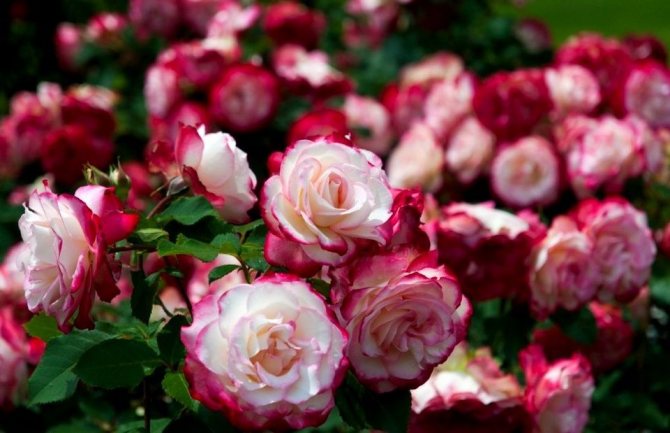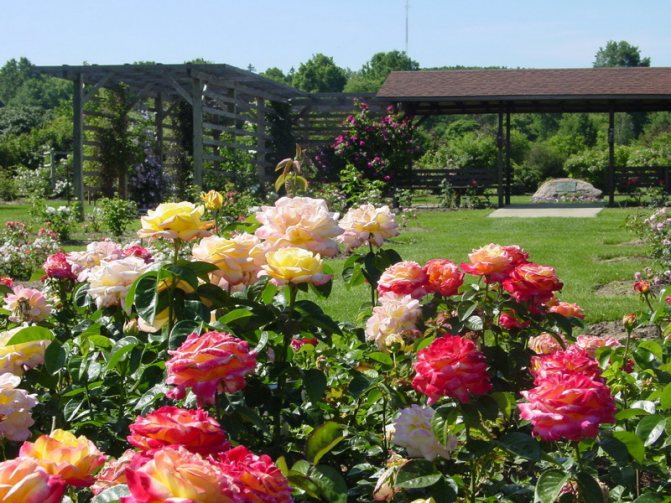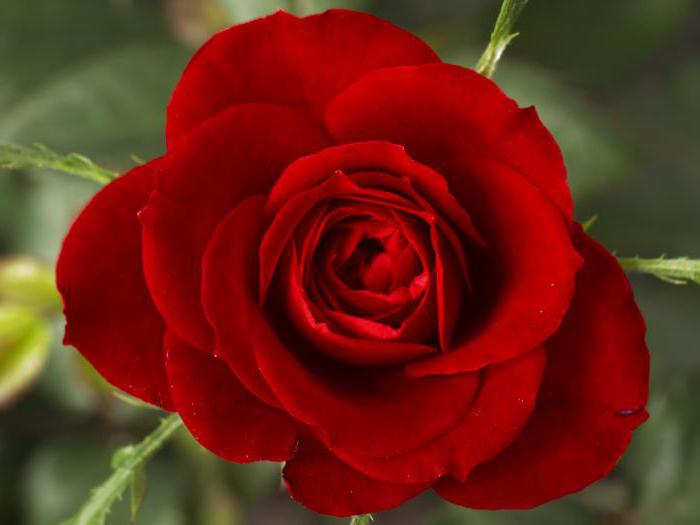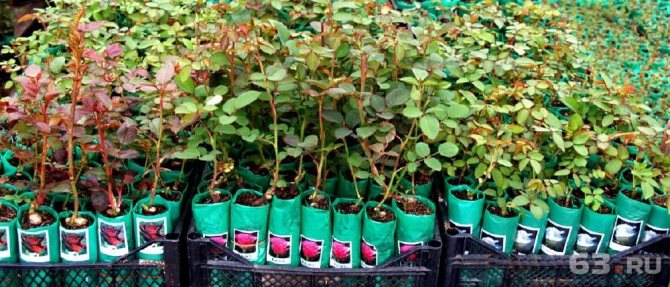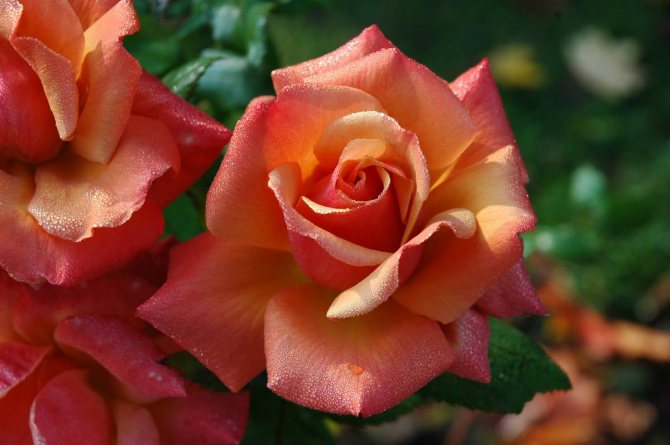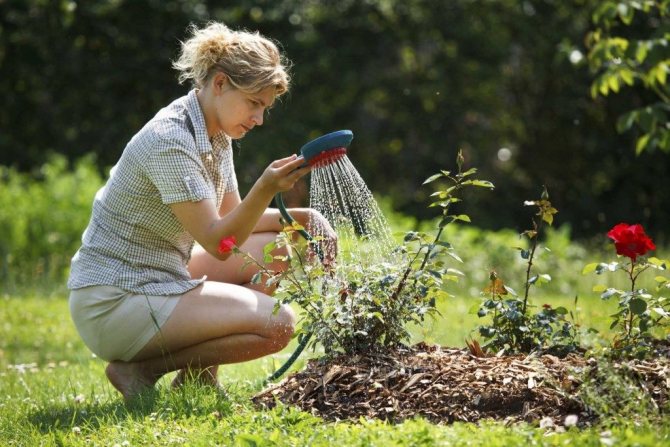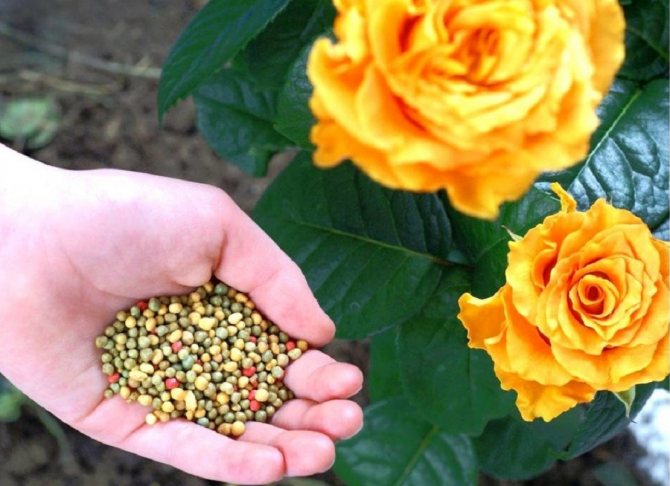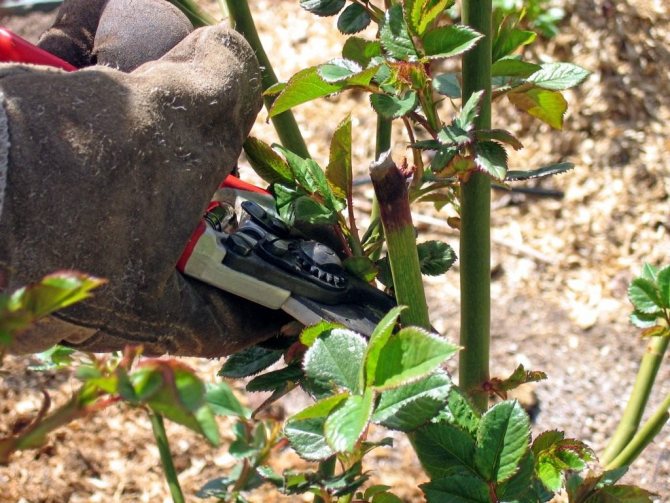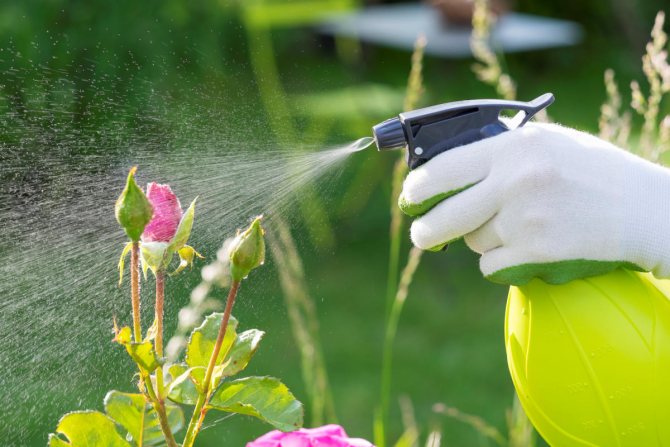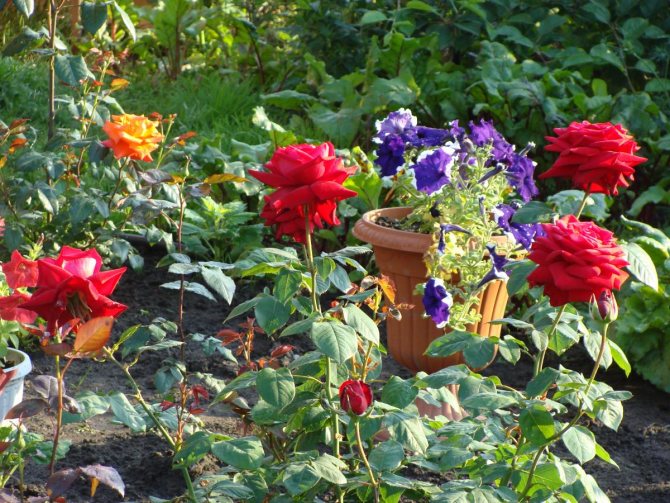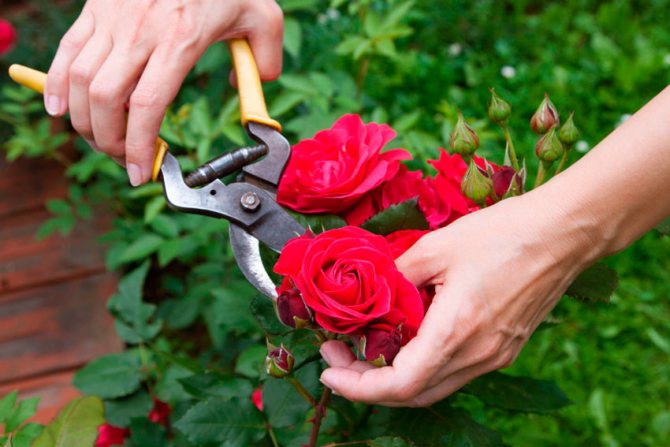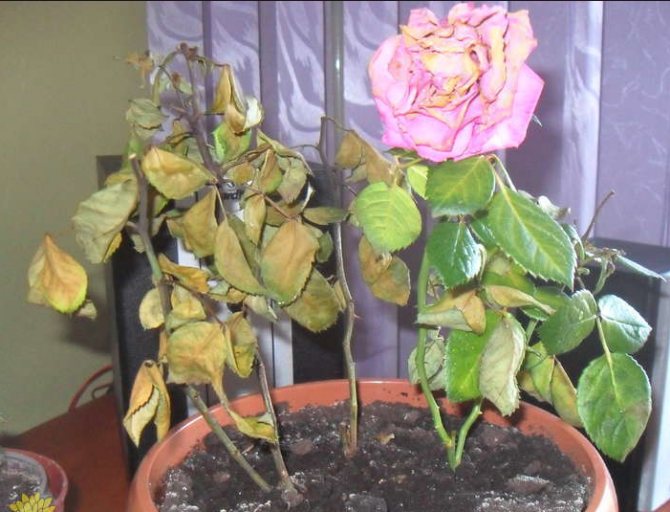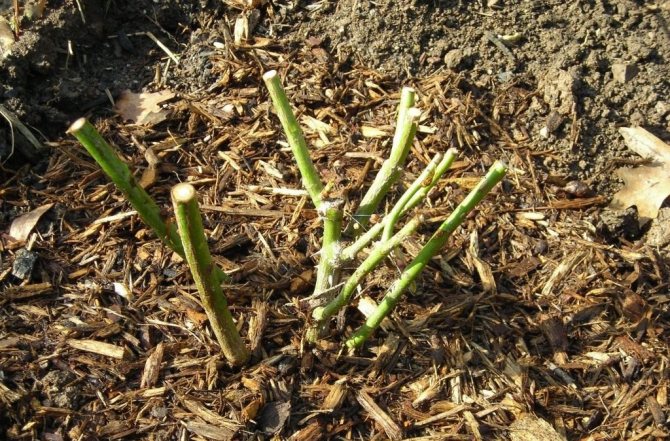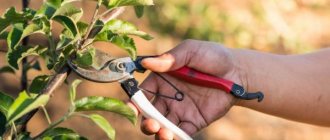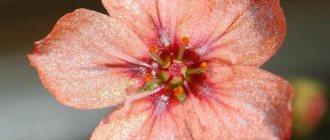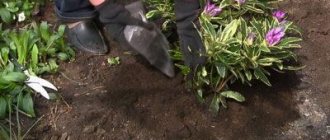Roses are rather capricious plants that are sensitive to many factors, including watering. They react to the composition of the water, to the frequency and abundance of watering. It seems that what could be easier: water the flower regularly every day, and it will grow and bloom. But in the case of roses, there are subtleties and peculiarities. How to properly water roses so that they bloom well and abundantly? How often and with what water should roses be watered?
Experienced gardeners advise watering roses with rain or melt water. Tap water is not very suitable for watering roses, as it contains a large amount of various mineral salts. In the absence of rainwater, you can take ordinary tap water and defend it for a day.
Roses are moisture-loving flowers. They tolerate the lack of water painfully: the foliage withers and crumbles, the growth of shoots stops, the bushes lose their decorative effect, the flowering is reduced, the flowers themselves become smaller.
Despite the fact that roses love moisture, watering them often and in small quantities is not recommended. With frequent watering, rose bushes develop superficial roots that are easily destroyed when the soil is loosened, the rose may die as a result.
On dry days, roses are watered 2-3 times a week. About 5 liters of water (about half a bucket) is added under each bush. Roses are watered early in the morning or late in the evening, but so that the leaves have time to dry before nightfall.
In rainy weather, watering should be done less frequently.
Once a week, it is necessary to water the roses abundantly. Holes or small furrows are dug around each bush, into which 10 - 15 liters of water (1 - 1.5 buckets) are poured. After watering, the holes are sealed and the soil around the bush is loosened to a depth of 5-10 cm.
In the heat, it is not recommended to water the roses with cold water. Strong temperature changes are harmful. Under such conditions, the roots of roses lose their ability to absorb water, and the rose may experience water starvation. It turns out that you water the bush, but moisture does not enter the plant.
Before and after fertilizing, the rose must be watered, since excess salts are harmful to roses. After fertilizing, watering is carried out, and then, when the soil dries up a little, the soil is loosened around the rose bush to a depth of 5 - 6 cm.
In order for the rose to survive the winter well, the soil under the bush must be dry. Therefore, rose bushes begin to prepare for winter in advance. In late August - early September watering of roses is stopped. If the summer turned out to be rainy, then the watering of roses is stopped even earlier - from the second half of August.
What garden plot is complete without magnificent rose bushes? They are a wonderful decoration of the garden, and delight with their bright buds from early spring to autumn. But for all this beauty to really arouse admiration, rose bushes need proper and regular watering.
The fact is that roses are very moisture-loving plants, but they have different periods of their development, when they need more or less water, and therefore it is very important to follow this rule and water the plants according to their requirements.
For example, in the first half of summer, a lot of water is required, but by autumn, if watering is not reduced, young shoots will develop, which will freeze in winter, therefore watering must be stopped altogether. Before the first frosts, the ground must be thoroughly moistened (at least 30 liters under the bush) and spud, otherwise the rose will not survive the winter badly.
How often to water garden roses in summer?
As already mentioned, roses love water, but surface watering is not enough to water one plant. A powerful root system lies quite deep and needs abundant intensive hydration.
Shrub forms of roses, including those, require a slightly smaller amount of water - 5-10 liters for one bush, but large weaving varieties require from 10 to 15 liters.
So that when watering the water is absorbed exactly where it was intended, and not spread, it is required to make a kind of earthen shaft around the trunk of the plant, and the bush itself will be in a small funnel. Similarly, the trunk circles of fruit trees are arranged, only for roses their diameter is much smaller.
In dry summers, you need to often water roses in the heat, since the earth dries out very quickly, and the roots do not have time to saturate moisture. This should be done at least twice a week, because a little wetting of the topsoil will not give results.
But if the summer turned out to be wet and rainy, then one watering per week will be enough. It is wrong to think that if it rains, then the plant does not need watering. Indeed, as a rule, rain wets only 5-10 centimeters of the earth, and the root system remains dry.
What to water roses from?
For watering rose bushes, a regular watering can without a sprayer or a bucket is best. But it is extremely undesirable to water the plants from a hose, because the tap water is cold enough and the plants will develop poorly when watered with it. It is good when there is a tank or barrel on the site, where water can settle and warm up before watering - this way it acquires a suitable temperature and is freed from harmful chlorine.
Those who prefer the sprinkling method for moistening plantings should know that it is better to do this in the early morning hours, because in the very heat, the water under the scorching rays of the sun will leave burns on the leaves. And if the top watering is carried out late in the evening, then at night, with a natural drop in temperature due to moisture, fungal diseases can develop.
There are such forms of rose bushes that are planted in pots and pots to decorate a garden or gazebo. They can be both large, similar to garden forms, and miniature, which decorate window sills and terraces.
Be that as it may, roses that do not grow outdoors also need moist soil, which means regular watering. The soil should not be wet at all times, but moist. It is very good if the rose grows in a clay pot, which retains moisture well, preventing the roots from drying out, as is the case with plastic containers.
Not everyone knows that you need to water a home (Chinese) rose in the same way as a miniature one - often and abundantly. As a rule, such a plant is grown in large containers, which means that irrigation will require at least 5 liters of water. To prevent root decay, indoor roses need good drainage. These plants respond well to spraying on the leaves, but not in direct sunlight.
Not everyone has the opportunity to plant near the house. After all, most people now live in apartment buildings. But everyone can buy a potted indoor rose. Only it does not survive for everyone. What is the reason?
Abundance and frequency of watering
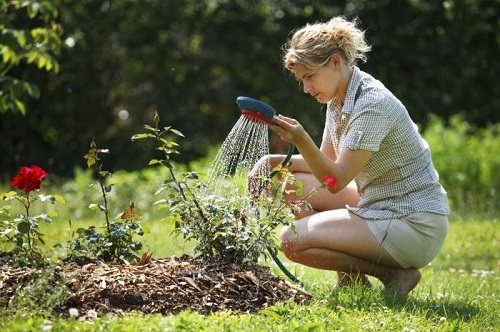
For one adult rose bush during the period of leaf appearance, as well as after the first flowering, at least 15 liters of water is required. The soil should be well moistened 30 cm deep. Under normal weather conditions, it is enough to do this once a week. As for how to water roses in hot summer weather, in such conditions the plants need more moisture and should be paid attention to them every 2-3 days.
So that the moisture does not evaporate quickly, it is advisable to mulch the bushes with horse manure.The mulch should be changed every spring.
Things to Remember
- Choose frost-resistant varieties... This increases the likelihood that even severe frosts will not damage the plant. Nevertheless, it is still recommended to cover the bushes.
- Provide proper careto achieve abundant flowering. To do this, it is important to take into account all the agrotechnical requirements of a given crop for watering, fertilizing, pruning.
- Protect from pests... Chemicals can also be used, but only until the ovaries appear and after flowering. During flowering, it is advisable to use folk remedies for spraying.
How often should a rose be watered
Garden rose is a moisture-loving plant, a lack of watering affects the brightness of the color and juiciness of the leaves, the buds become smaller and lose their natural attractiveness. But an excess of moisture will also be harmful, so you need to know how often you need to water the rose so that your favorite flowers decorate the garden for a long time.
Gardeners recommend remembering two important rules that must be followed if you want to see abundant and bright flowering in the garden:
- Do not water roses during the sultry period of the day, as droplets of moisture on the leaves and rose petals can cause severe burns.
- You cannot water the plant in the evening if you do not want the plant to become infected with a fungus.
Following these simple rules will increase the lifespan of the plant and instill drought tolerance in the rose bushes.
In the normal mode, it is recommended to water the rose at least once a week; in very dry and sultry weather, watering can be increased.
Young or transplanted bushes need frequent and abundant watering, this will allow them to safely take root in a new place.
Plants need frequent and abundant watering at a time when the buds begin to actively bloom, when young leaves and shoots appear, and after the rose has bloomed for the first time.
Where are you from, beauty?
Many years before our era, garden roses lived in the gardens of Ancient Rome, where hardworking gardeners and gardeners grew exceptionally useful crops. The beauty of the damask rose, the daughter of the East, delights in the ancient mosaics of Pompeii. Herodotus in the fifth century BC, describing the gardens of Macedonia, mentions velvet types of roses. They were grown by King Midos himself. And how the feather of the philosopher and botanist Theophrastus was inspired by wild varieties and a garden climbing rose in Ancient Greece! The first scientific characteristic of wild and horticultural species belongs to him. Theophrastus described in detail the methods of growing and propagating roses.
The beauty of the pure, delicately fragrant, beautiful queen of gardens was sung by the great and unknown in poetry, novels, reflected on canvases, left in stone, wood, metal during the Renaissance. Charlemagne, composing instructions for the owners of estates on the management of the economy, gave a list of crops that should be grown. An honorable place in his manuals is occupied by a rose, a description of recommendations for care and selection. The variety of varieties that exists now was formed as a result of centuries of crossing and selection of different varieties of wild rose. By the end of the nineteenth century AD, all countries in the world were already breeding roses.
Basic rules for proper watering of roses
Just loving and admiring roses is not enough for their active growth and lush flowering. It is necessary to competently organize the process of caring for flowers, to make effective watering. There are some tips on how best to do this.
- First advice: be sure to arrange a roller of earth around the rose bush. This will prevent moisture loss during watering, as the water will fall directly on the roots, without spreading over the entire soil surface and not evaporating in vain.
- Second tip: always defend the water you will water your plants with. There are many harmful substances in tap water that can harm a flower bush.The water should be warm: flowers, like children, from cold water can simply get sick and wither. If possible, water the rose bushes with water collected after the rain. There are fewer harmful salts in rainwater, which is beneficial for the flowering and growth of your favorite varieties.
- Tip three: provide your pets with weekly watering. Watch for weather changes, and if necessary, control the dose of watering.
- Fourth tip: do not spare the water. One standard bucket is usually enough for one rose bush.
- Fifth advice: do not allow the formation of an earthen crust, otherwise the rose will simply suffocate. Loosen the soil or mulch more often - cover the top layer of the earth with organic residues (chopped straw, leaf humus, peat, tree bark) - this will eliminate the problem.
- Sixth tip: get a small watering can. With its help, you can get deep under the bush, moisten all dry places.
- Seventh tip: exclude watering from the hose. The rose does not need superficial watering, it prefers deep and plentiful drinking.
Video "How to water garden roses"
How to properly water roses in spring
How to water roses after winter, with the appearance of the first warm rays of the sun? Roses are still sleeping and I want to wake them up especially gently and affectionately, to give strength for successful and healthy development.
In the spring, during the period of active growth, roses also need weekly watering and high-quality feeding. This is especially true for young bushes planted in the ground, they should be watered for the first time every two days with further transfer to the standard regime. For young shrubs, watering after planting is very important for rooting and growth.
Rooted shoots of past years prefer to take a bath at least once every two weeks.
In order not to harm the plant and to reliably determine whether the shrub needs watering, it is enough to touch the ground under the mulch: if it is moist enough, watering can be postponed for a while.
How to properly water roses in summer
The summer season is the hottest time of the year, and watering rose bushes in summer is directly dependent on weather conditions.
In hot weather, watering can be halved - water once a month.
Abundant rains allow you to postpone planned watering, but surface and light rain is not a reason to cancel the next watering.
In the summer, it is very important to carry out a visual inspection of the garden, the condition of the plant will indicate a lack or excess of watering. With an insufficient amount of moisture, the rose bush turns yellow, with an excessive amount it rots, has an unsightly appearance.
Reproduction of roses in the fall at home
Propagation of domestic roses is optimal by cuttings. The method ensures the maximum survival rate of the bush. It is best to use a cutting 30 cm from a branch with a bud. It is recommended to cut it at the smallest angle from each edge. All excess flowers and leaves should be carefully removed.
September is suitable for breeding. The material is recommended to be rooted in:
- light soil with sand;
- water;
- mixtures of peat and sand.
Note! The use of water does not imply a fluid change. It can only be topped up as needed.
When the stalk grows 2 cm, it is transplanted into the ground. It is not necessary to deepen the root collar. Since the material is very fragile, it only needs to be lightly sprinkled with earth. Then you need to water, squeeze the soil slightly and move the pot with the handle to where it is light. However, exposure to direct UV rays should be avoided. As a rule, the growth of the kidneys begins after 2 weeks.


Reproduction of roses at home in autumn
If sand is used, then it is necessary to deepen the planting material by only 1 cm.After watering and squeezing the sand, it is recommended to cover the planter with a film or glass. You need to put the pot in a bright and warm place so that the air temperature in the room does not drop below 18 degrees.
How to water roses while feeding
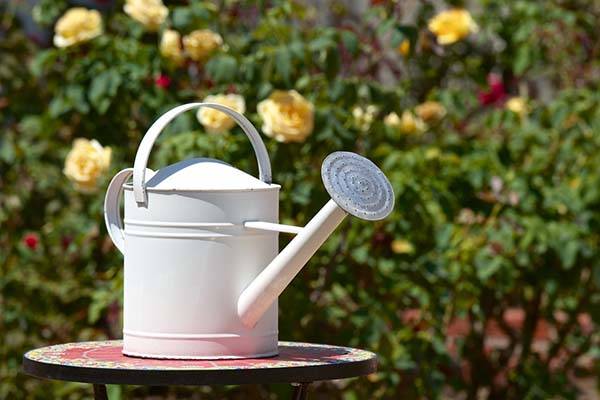

For plants, water is a kind of conductor of nutrients, therefore, good soil moisture before feeding and, preferably after it, is very important. Rose lovers strongly recommend minimizing harm to delicate, beautiful buds by pre-watering before feeding the plant again. Water can be fortified by adding various natural nutrients to it.
Basic rules for making mineral dressings
Before applying organic or mineral fertilizers, florists recommend first watering the soil under the flowers.
A garden rose bush of spring planting this year does not require mineral fertilizing, because the land is always fertilized before planting the plant in the ground.
The flower bush of autumn planting needs support only next spring, and even then in half.
It must be remembered that improperly selected mineral or organic fertilizing can lead to various diseases of the bushes, it is recommended not to overfeed the flowers with mineral and organic fertilizers.
Warm and dry weather is considered a favorable factor for the complete absorption of nutrients by the plant.
Nettle infusion
Nettle infusion as a top dressing is an effective natural remedy for any plant. The infusion is saturated with microelements and nitrogen important for growth. It is not difficult to prepare it, and the result exceeds all expectations.
Fill any container halfway with grass and fill it with water to the top. Leave the infusion for fermentation for half a month. When using the base infusion, it must be diluted 1 to 10.
Nettle infusion is used as an independent remedy, if desired, it can be diversified with various herbs (for example, chamomile, comfrey, common tansy, remains of straw or grass from a freshly mown lawn, wormwood, any weed will do), adding them to the prepared solution.
You can store the prepared drug for 15 days. It is best to always use a freshly prepared infusion.
Herbal weed infusions
Common wormwood, chamomile, field clover are weeds ideal for making infusions to nourish garden roses.
The collected grass must be coarsely chopped and completely filled with water. Dolomite flour is thoroughly mixed into the resulting slurry, about 2 kg per 100 liters of water. The infusion does not have a very pleasant smell, and to get rid of or slightly muffle it, you can add microbiological preparations, which are sold ready-made in gardening stores. You will no longer have to worry about what to water the rose for growth and lush bloom.
Soap-vodka solution
A soap-based solution has antimicrobial effect. Vodka or alcohol greatly enhances the action of the soap.
Preparation of the product does not take much time and effort. Dissolve a brick of ordinary dry soap or a bag (200 - 250 ml) of liquid soap in hot water, combine with 10 liters of hot water and add about 300 - 350 ml of vodka or denatured alcohol. Mix everything well and use undiluted as directed (spraying).
Wood ash
In one liter of boiling water, steam two full glasses of wood ash. Put the mixture on fire and boil for no more than 15 - 20 minutes. Cool and strain if desired. Before use, dilute with ten liters of water, add a micronutrient fertilizer tablet and apply for spraying garden roses.
Urea
Antifungal agent based on urea, repels sucking insects - parasites from rose bushes. You just need a bucket of water with urea dissolved in it (30 g) to spray the flowers.
Saltpeter
A bucket of water with saltpeter (1 tablespoon) per bucket of water can be used to spray the plant for prophylactic purposes.
Non-standard feeding method
Many gardeners - amateurs offer general attention an unusual way to "revive" roses after hibernation - to give them vodka to drink. To do this, you need to take one glass of vodka in a standard bucket of water (10-15 liters) and water each bush abundantly.
Flies in roses: an effective home remedy for pests
Caring for indoor roses at home is often overshadowed by the appearance of harmful insects. This type of plant is most often attacked by:
- flies;
- powdery mildew;
- gray rot;
- spider mite;
- rust;
- various fungal diseases arising from stagnation of water in the ground.
Flies are the main problem of the home flower. However, there are many methods for removing it. Most often, formulations with soap, various natural ingredients, and substances with a pungent odor are used for this.
An elementary way to eliminate midges is a soap solution. With its help, the buds and leaves of the culture will need to be thoroughly rinsed. This procedure is repeated several times during the month. At the end of the work, the pot should be taken outside.
Garlic extract works well on the problem. You can stick several slices of this fragrant product into the ground. Another great method involves using tomato broth. It is made from plucked tomato tops. The greens are boiled for a quarter of an hour. Then it is cooled and filtered. The resulting liquid is suitable for spraying roses, repelling midges for a long time.
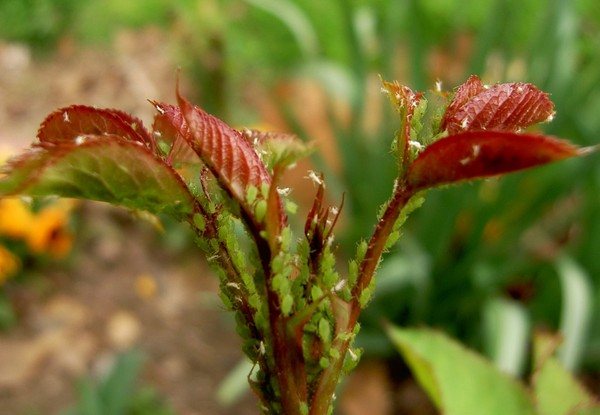

Flies in roses: fight
On a note! Pests do not tolerate ash and tobacco. It is necessary to pour a little of such a product into the ground and slightly moisten the soil. It is believed that in a few days there will be no trace of the midges.
Soap-potato solution has a similar effect. To eliminate aphids from home roses, you need to take 0.5 kg of potato peels. The cleanings are poured with 2 liters of boiling water and infused for 2 days. Then the liquid is filtered, after which a little liquid soap is poured into it. The resulting composition is suitable for spraying infected bushes.
You can resort to chemistry. To remove midges, a cotton wool soaked in dichlorvos is placed in a flower pot. The plant is sealed in a plastic bag for 20-30 minutes. Then the bag is removed, and the rose is taken out into the fresh air.
When and how much to water garden roses
Rose is a moisture-loving plant. With a lack of water, the foliage crumbles, the growth of shoots decreases, the flowering decreases, and the flowers themselves become smaller and lose their attractiveness. Although the rose loves moisture, it must be remembered that an excess of water is detrimental to the plant.
There are several phases of watering:
- Spring. In the spring, the bushes planted in the ground are watered every two days. This is necessary so that soluble minerals, the most important component for plant growth, are well absorbed. Water is a kind of conductor that dissolves and delivers nutrition to all organs of the plant. Note that spring watering should be started carefully and gradually. When the plant gains strength, the intensity of soil moisture can be reduced by watering the roses as the soil dries, but at least once a week. If the weather is hot and without rain, during intensive vegetation, roses are in great need of watering, so increase the amount of water.
- Summer. In the summer, you can reduce the frequency of watering to twice a month, but if the summer is dry and hot, you will have to continue watering twice a week. Please note that even on a rainy summer, roses still need regular watering. Daily, but not too heavy rain, is not able to completely saturate the ground under the crown. By the end of summer, watering decreases.
- Fall. Moisturize roses in dry August and September in moderation. This is a very important point: a decrease in watering in the autumn does not allow the vegetative mass to grow, otherwise the prematurely appeared sprouts will freeze in winter.
- Winter.In the pre-winter period, roses need to be watered abundantly a couple of weeks before the onset of frost, after which the bushes must be spud. It is impossible to water the shrub anymore: roses tolerate winter well if the ground under them is dry.
What else is included in the care?
Caring for a room rose includes many more aspects, consider the main ones:
We suggest you watch a video about caring for indoor roses:
With a properly installed watering system, the rose will delight you for a long time, it will bloom regularly and for a long time, from the first warmth to late autumn. Treat the purchased pet with attention and thrift, and it will undoubtedly give you mood, even on the most gloomy and sad days.
If you find an error, please select a piece of text and press Ctrl + Enter.
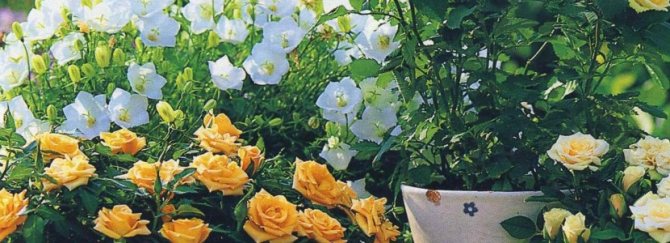

A bright and delicate home rose is a real interior decoration. However, it should be borne in mind that caring for indoor varieties of this flower is very different from growing this garden crop. At home, it is imperative to provide the plant with full watering, useful fertilizers and fertilizing, while building the correct light and temperature conditions in the room. Compliance with the entire complex of conditions will allow you to enjoy the view of luxurious buds and juicy leaves all year round.
Watering roses depending on the type of soil and climate
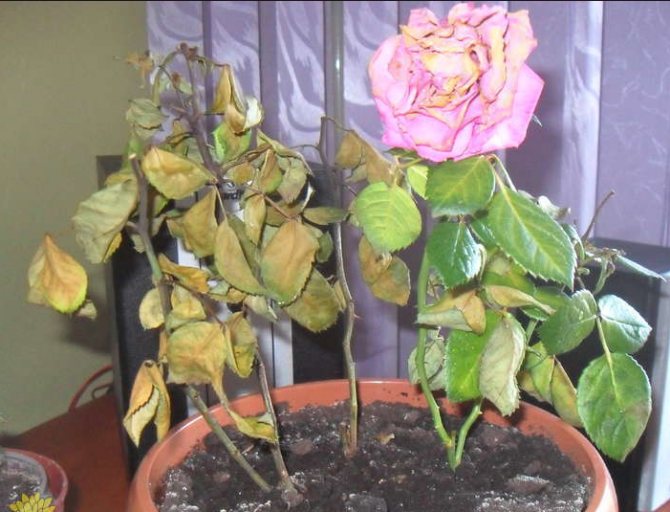

The result of insufficient watering of roses
Also, watering and the amount of water used depends on the location of the rose garden.
- Southern region - once every ten days from twenty liters per bush;
- The middle strip - every two weeks from ten liters per bush;
- Northern strip - once a month from fifteen liters per bush.
One of the important factors in determining the amount of watering is the type of soil:
- sandy soil is watered more often, adhering to the minimum interval indicated above;
- clay soil retains moisture longer, which means less watering.
It is also important to take into account the type of roses, since standard roses need a smaller liter than woven roses.
Remove plant residues and destroy weeds before mulching
| Than to mulch Description:
|
| Step by step process Description:
|
How to water roses


The initial stage of drying roses with improper watering
For high-quality watering, certain conditions must be created even at the time of planting, a prerequisite is the creation of an earthen rampart around the bush. It limits the spreading of liquid, directing it to the boundaries of the placement of the root system.
Initially, up to twenty liters of water is poured into the resulting circle, the exact displacement is always determined based on the size and variety of the bushes. The process does not end there. Roots need not only moisture, but also oxygen. The day after the soil is moistened, the soil is loosened 10 cm deep and covered with mulch. To prepare mulch, you can use tree bark (but not oak or walnut), peat, rotted manure, seed husks. In the presence of mulch, the top layer of the earth will always be loose, the roots will gain access to oxygen, and the water will not evaporate so actively.
Roses are best watered from a watering can: water is poured directly under the bush, without falling on the leaves and stems. Watering on top of the bush is not desirable.
How to fix the consequences of mistakes?


There are various consequences of improper watering, the main ones are related to the root system.
- Abundant watering:
- with abundant watering, rotting of the root system occurs;
- in this case, you need to pull out the root system of the plant and check it for decay;
- all damaged areas must be cut off and treated with a special tool;
- transplant the flower into new soil and install a watering system for the flower.
- Insufficient watering:
- insufficient watering leads to drying out of the root system;
- if it did not have time to completely dry out, then you should simply restore the irrigation and fertilization system to the flower soil;
- if the root system has dried up, then it is necessary to resort to resuscitation of the indoor flower, if it is not too late;
- but at the same time, you should not fill the plant, another option would be to transplant the flower into a new soil that is not dry.
Important Tips
- Do not water roses in the heat, the remaining moisture on the leaves and flowers will cause burns;
- Do not water the shrubs in the evening - wet leaves and stems can be susceptible to fungal infections.
If you follow all the rules when watering roses, then after 3 years they will have a new useful quality - drought resistance. During this time, the roots deepened and developed and can extract water not only from the surface, but also from the depths of the earth.
Water for watering roses
- For irrigation, you need to take at least 2-3 days of tap water, this action is required to weather the chlorine from the water.
- Rainwater has less salt, it is also suitable, and river water is also suitable.
- The water from the well is too cold for irrigation, the roots of the plant cannot fully absorb the cold water, therefore, even with wet soil, the shrub may begin to water starvation.
- The optimum water temperature should be no more than 22 degrees.
- Water with the addition of nettle infusion is good for roses.
Signs of insufficient or over-watering:
- leaves turn yellow;
- leaves fall;
- flowering decreases;
- flowers dry up;
- flowering completely stops;
A gray coating on the ground under the bush indicates over-watering.
Feature classification
There are several thousand varieties and varieties. Classification into types of roses by origin is difficult, since it is often impossible to establish. Therefore, they are divided into conditional groups that unite varieties according to resistant characteristics. For example, on the basis of "growing climate" there are garden and park. The first were bred in harsh conditions, and such roses can survive in winter without shelter. Parks, delighting with continuous flowering, are lovers of the subtropics, careful care and mandatory closure for the winter.
The sign "number of petals" gives the division of roses into simple (have no more than seven petals), semi-double (up to twenty) and double (more than twenty).Another essential feature is color. There are eight groups - from a white mixture to multi-colored, when the petals are painted in several immiscible shades.


There is a simplified applied classification: roses that are cut for sale on long peduncles, potted varieties and garden varieties. On the international market, the sign of "freshness of aroma" is especially highlighted, there is a whole line of breeding work on it. Especially outstanding and intensive are used in the production of perfumery and cosmetics.
Sufficient watering
In a hot season, roses need to provide a sufficient supply of moisture, that is, watering the shrub must be frequent and abundant, and with water that has had time to warm up a little in the sun. It must be remembered that with age, the roots of a plant go deeper and deeper into the soil, which means that the older the plant, the more moisture it needs.
The frequency of watering depends on the type of soil in your area - the heavier it is, the less often you need to water the roses growing on it.
For example, on loams, moisture lingers and lasts longer, which cannot be said about other types of soil, and therefore one watering per week will be enough for the bushes.
If you want the soil under the plants not to lose moisture, make around them a kind of earthen embankment, covering the rhizomes with mulch. Believe me, this not only looks spectacular, but is also very useful for roses.
The importance of regular watering at home
Most indoor roses will only grow and bloom well if they are watered abundantly. The soil should remain moist at all times, but it is important that excess water flows freely from the soil through the holes in the bottom of the pot.
Constant drying out of the soil will damage the roots.if it affects most of the system, even the resumption of regular watering will not be able to save the plant, and it will soon die.
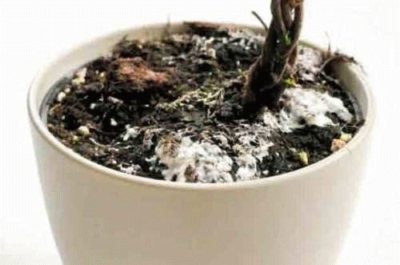

Excessive watering and lack of good drainage lead to stagnation of liquid in the pot, which in turn becomes the main cause of root rot, as well as damage to the soil and the rose itself with mold and fungus. A plant that is constantly flooded can either wither or, oddly enough, dry out.
The latter is directly related to damage to the root system - if most of it died, the flower simply stops receiving water, even if there is enough of it in the soil.
Fertilization
In summer, roses are especially demanding on fertilization. It is advisable to carry out this procedure regularly and at a frequency of at least twice a month, and it is very important to feed the bushes after the completion of the first phase of flowering - this is the only way your plants will have the strength for further successful development.
If you want, the necessary preparations can be purchased at the store, or you can prepare yourself. To do this, you will need five kilograms of cow dung (or chicken dung).
Fill it with fifty liters of water and leave to infuse for a week, then dilute it with water at a rate of 1: 5 and feel free to start watering the roses.
As for nitrogen fertilizers, then, starting from the second half of summer, it is better to refuse them.
Botanical characteristic
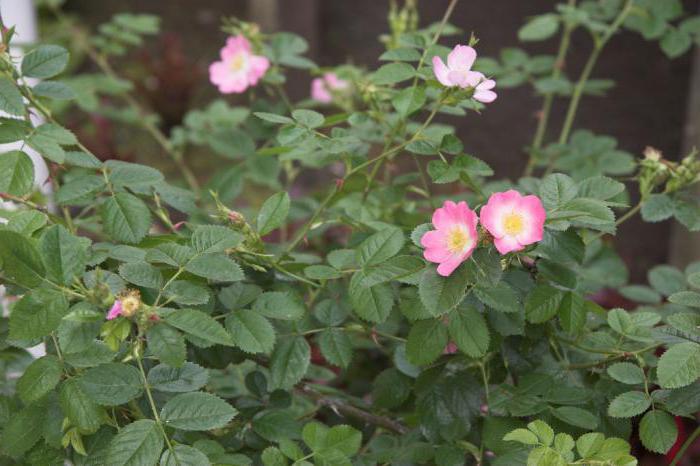

Rose is a rosehip plant. Bushes are pyramidal and widely spreading. The height of the bushes of different varieties ranges from twenty centimeters. Such miniature shoots can have a hybrid tea rose. Slightly more, from thirty centimeters, in polyanthus species. And there are bushes with branches of several meters. Climbing rose can boast of such size of shoots.
There are two types of perennial branches - the main ones and those that have completed their growth. Annual shoots are fatty, premature, actually growth, generative and selective. Flowering branches can be short, from only ten centimeters, and can reach almost a meter. The flowers are very diverse in shape, size, and the number of petals.In elite varieties, they are placed singly on a peduncle; many garden roses, especially park species, are distinguished by many inflorescences on the stem. A wide range of colors of buds. So far, only the blue variety does not lend itself to selection. There are smooth-petal and terry varieties. The aromas are also diverse - from the classic, which is owned by a damask rose bud, to the smells of citrus, berry-fruit, oriental spices and others.
Trimming
To make your shrub feel great, do not be too lazy to remove the blooming buds from it. Do not let the flowers fall,
because in the petals that have fallen to the ground, fungi and bacteria often begin to develop.
In addition, it is advisable to remove the emerging fruit ovaries from rose bushes, since they take away the strength from the plant that is so necessary for it to bloom.
If you want your shrub to delight you with the abundance and duration of flowering, know the following:
- When planting roses in the ground, do not leave the grafting site uncovered with soil. It is good to deepen the root collar by 2-3 cm.
- It is forbidden to prune garden roses for the winter, since in this case the plants expend their energy, which means that they leave for the winter weakened. This is best done in the spring.
- It is advisable to water the bushes with slightly cool water, and rarely, but abundantly.
- Do not get carried away with long-term feeding - it is necessary to fertilize the rose bushes until mid-summer, after which it is better to stop the introduction of nutrients.
- There is no need to spud rose bushes with peat for the winter, because if it suddenly gets warmer, your plants, instead of preparing for hibernation, will grow.
Features of planting seedlings of roses of various types
Park. To plant roses of this type of pit, you need to do a little more: 90x90 cm, 70 cm deep.It is important that voids do not form in the row of plantings, if this happens, fill the empty spaces with annual flowers. The planting density for park roses is also important so that the plants do not give many root shoots, which must then be removed.
Teahouses and Floribunda. For these beauties, the best planting time is spring. For tea roses, you will need a support for climbing shoots. Pits for plants of these types can be made a little smaller: 50x50 cm with a distance of about 50 cm.
Hybrid tea. Of all types of roses, hybrid tea are the most picky about heat, so you need to plant such roses in May (subject to the onset of stable warm weather). The planting method is better for her "wet". Do not let these roses bloom for a couple of weeks (cut the first 4-6 buds for this).
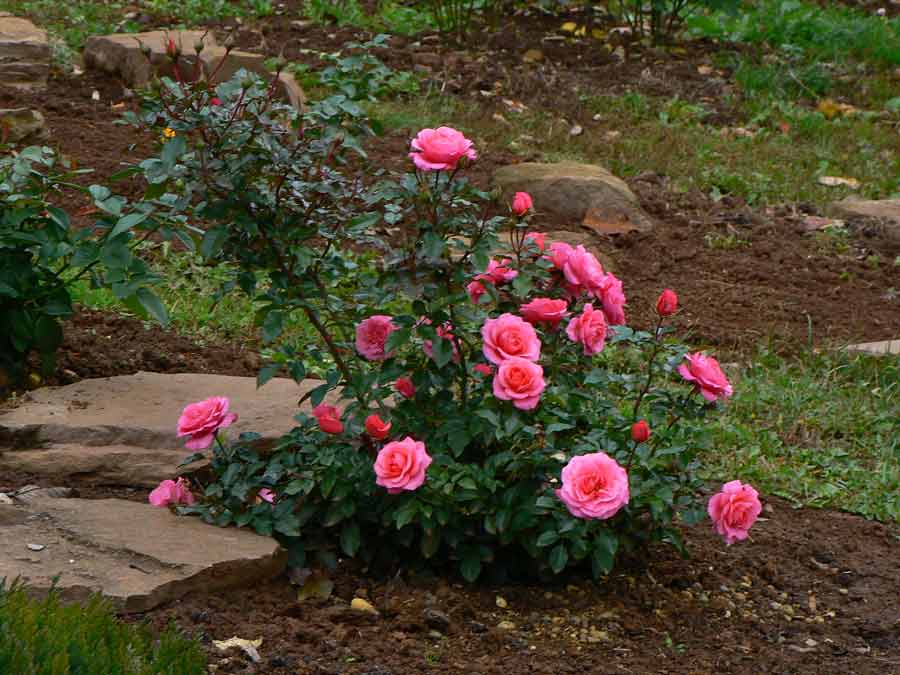

Climbing. These types of roses can be planted in spring and autumn. When planting, immerse the inoculation site in the ground a little deeper than usual (by 10-12 cm). This species needs support (the distance between the support and the stem of the rose is no more than 50 cm) and shelter for the winter. Before planting roses, the lashes need to be cut to a height of 30-35 cm and the roots should be shortened. When planting, climbing roses are slightly tilted towards the support, and the roots are directed away from the support.
Groundbred. For such roses, it is very important that there are no weeds in their area. It is best to sprinkle the soil with bark or sawdust after getting rid of weeds. After all, the root system of soil blooms completely covers the entire earth with very flexible and prickly shoots.
How to care for a rose
When roses are grown in greenhouses, they are kept at 100% humidity, therefore, getting into stores where there are no such conditions, the plant is stressed. Experienced workers help to restore strength to the rosette, and buyers can already purchase a completely healthy blooming specimen. But what to do next when they brought the pot with the plant home? First you need to take scissors and cut off all the flowers and buds from the rose. I perfectly understand that I really don't want to lose that beauty, because of which the purchase was made.But here, alas, without options, only by deciding on pruning, you can provide the plant with a long life.
Do not forget that the apartment has dry air and a different climate that is not familiar to the rose, the leaves may begin to turn yellow and fall off. To prevent this from happening, a transplant is needed, and the sooner you do it, the better.
When replanting, use rose soil and do not forget about drainage. The most important thing is to shed the plant with Epin to avoid prolonged stress and create conditions for core non-education.
We put a film on a pot with a plant, make a mini-greenhouse and put it away from the battery and sunlight.
The greenhouse must be opened every day in order to ventilate, if necessary, water the plant and do not forget to sometimes spray it with Epin. After all these procedures, the flower will develop rapidly, new buds will wake up, stems will begin to grow. As soon as you notice that the flower has begun to grow, the film must be removed. The rose is very light-requiring, so you should move the pot with it to the windowsill, closer to the sun and fresh air.
In summer, it would be good to take the rose out to the balcony or dig it right along with the pot on the street in the garden. Then the plant gains strength, becomes healthier, lush. Indoor roses growing in the ground all year round feel great. At first I was also surprised how this houseplant can survive our frosty winter.
But it turned out that the roses hibernate quite successfully under cover, for three years of my practice not a single one has frozen. I think the best way to propagate roses is by cuttings. I do this in the spring, choose a lateral woody shoot from the bush I like and break it off, just break it off, don't cut it off.
I plant the cutting in a hole with sand, placing it at an angle of 45 °, and ram the sand. It is very important to do the tamping well, straight with your fist and with all your might: if the sand remains loose somewhere, the stalk will rot. Water the planted stalk and cover it with a jar or a cut plastic bottle on top. By the end of summer, the cutting will already have decent roots, and you can transplant it into a pot if you plan to transfer the plant to the house. I don’t disturb the rose for the flower garden, I leave it on the street, I just cover it and transplant it in the spring.
The rose blooms from spring to autumn, the faded buds should be cut off, this will stimulate the growth of new lateral shoots.
For a rose, such a pest as a spider mite is very terrible, it often infects the plant. You should not wait for its appearance, it is better to take all preventive measures in advance. Spray the plant with Fitoverm.
Let your roses remain healthy and delight with their flowering for a long time.
ORDER QUALITY AND CHEAP SEEDS AND OTHER GOODS FOR HOME AND COTTAGE. PRICES ARE BOTTLE. CHECKED! JUST LOOK FOR YOURSELF AND BE AMAZED HOW WE HAVE REVIEWS. GO >>>
Below are other entries on the topic "Cottage and garden - do it yourself"
- Canadian park roses - varieties, care and cultivation in a flower garden: For those flower growers who consider ...
- Frost-resistant roses - I share my growing experience: HOW I GROWED FROST-RESISTANT ROSESTwo ...
- If the roses got sick after wintering under the shelter - “got wet”: What to do if the roses got sick ...
- How to plant roses correctly - a master class from a PROFESSIONAL: CORRECT PLANTING OF ROSES What can be ...
- Reproduction of own-rooted roses - how to do it right: How to grow and propagate own-rooted ...
- Roses - professional care (detailed photo): Roses - cherish and cherish ...
- Autumn rose care: How to care for roses in the fall ...
Subscribe to updates in our groups.
Let's be friends!
In addition to flat beds planted with vegetables, there is a flower garden in almost any summer cottage. Garden flowers are pleasing to the eye and uplifting. Especially popular are garden roses - multi-colored rose bushes look simply luxurious. But for good flowering, roses need proper care, in particular, watering. About watering roses tells the Land of the Soviets.
Rose is one of the most moisture-loving garden plants, therefore proper watering of roses should be abundant... But there is one caveat: the need for water in roses depends on the growth phase of the plant. So, during the intensive growing season (the period when the plant buds, shoots and leaves appear, as well as the period after the first flowering, when the first shoots begin to grow), roses experience the greatest need for moisture.
Why is this happening? The fact is that during the growth period, roses (like any other living organism) need a large amount of nutrients for normal development. Therefore, any self-respecting gardener will provide plants with abundant feeding. But without water, top dressing simply will not be assimilated - water acts as a conductor, delivering nutrients to the soil.
If the watering of the roses is insufficient, then any feeding will be ineffective.: Plants simply won't get enough nutrients. In addition, moisture itself promotes plant growth. So you can't do without abundant watering.
What about the rain, you ask? Do roses need to be watered if the summer is rainy? Necessarily needed. Even if it rains every day, this moisture is not enough - such watering is superficial. So you can't trust the watering of roses to the rains, this procedure remains on the conscience of the owner of the garden.
In order for the watering of roses to be of high quality, special conditions must be created. When loosening flowers for the first time, you need raise the edges of the bedsby creating an earthen rampart around each bush. Then the water will not flow to the side during watering.
To water roses (and all garden flowers in principle), you need to use settled water naturally heated in a special tank... Cold water from a well or a hose is not suitable for these purposes - after such a "shower" the flowers can get sick. Watering roses should be infrequent (once a week, in dry hot weather - two), but abundant: 5-10 liters per bush for ground cover roses and 10-15 liters for climbing roses.
It is most convenient to water the roses from the watering can, from which the sprinkler was previously removed. You need to pour water directly under the bushwhile trying not to get on the leaves of the plant. For roses, watering from above is highly undesirable, especially if you are watering flowers from a hose with a strong stream.
If you prefer to water your roses using the sprinkler method, sprinkling water on the bushes, there are two important conditions to observe. Firstly, you can not water roses in extreme heat, especially if the bushes are in direct sunlight: drops of water remaining on the leaves and flowers will lead to multiple burns to the plants. Secondly, roses cannot be watered in the evening... If they do not have time to dry out before nightfall and remain wet in the dark, then there is a danger of fungal diseases affecting roses.
After watering, you need loosen the soil under the bush... If this is not done, an earthen crust will form on the surface, which will interfere with the breathing of the plant roots. Get rid of constant loosening will help mulching - covering the soil surface with mulch (organic residues). Thanks to mulch, the topsoil will always be loose. Peat, leaf humus, chopped straw or bark, rotted manure can be used as mulch.
Autumn watering roses differs from the summer one. At the end of summer, the plant's need for moisture decreases, and too abundant watering will stimulate the roses to further intensive growth. The plant will release young shoots, but by autumn they will not have time to get stronger and, most likely, will die in winter.
If autumn rainy, watering roses can be stopped in September: precipitation will be enough for the plant. If you stand out warm and dry autumn, then roses still need to be watered once a week, reducing the volume of water by 3-5 liters. Also, in the fall, you need to ensure that the soil does not remain dry after the onset of frost.
Pre-winter watering of roses - an important stage in the preparation for winter. Before the onset of frost, roses need to be watered very abundantly - at least 30 liters of water per bush.


Some important tips for growing roses
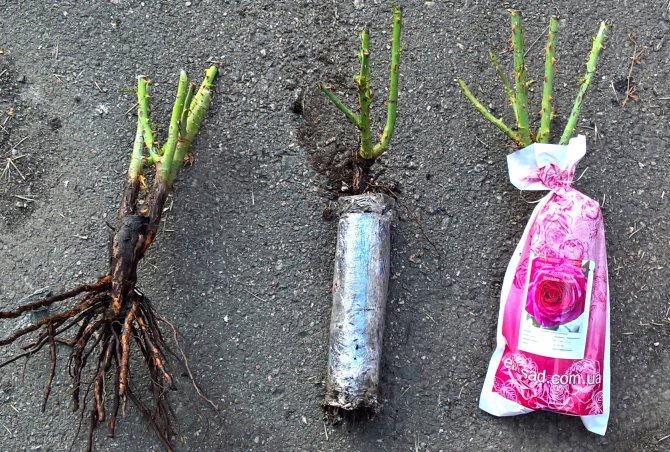

When buying seedlings, it is important to carefully examine the roots - they should not be damaged. Photo: stroy-
- There are many types of roses... When buying seedlings, it is worth focusing on the growing region, resistance to frost, pests, diseases.
- Choose a suitable drop-off location... Roses love sunlight, so the place should be well lit without drafts.
- Inspect plantings regularly... Such a simple action will help in time to detect the first signs of diseases, pests and begin to fight them.
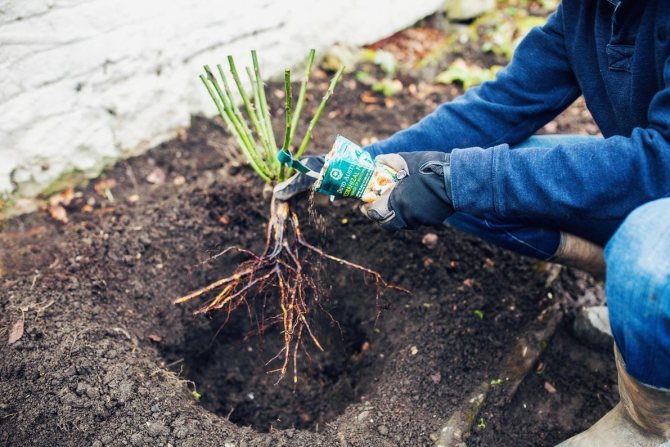

The correct choice of location will increase the resistance of roses to diseases, environmental conditions. Photo: The author of the video tells how to care for roses in the open field, depending on the season. Emphasizes on the features of all beginner events, which will help to achieve lush flowering:
Leaving roses for winter holidays


You should not rush with this procedure when caring for roses. With a gradual decrease in temperature in the plant, the concentration of internal forces occurs. Roses are self-hardening.
But, if you miss the period of shelter (this is a drop in temperature below -5 ° C), the shoots of roses will freeze from the inside, and rot will go there in the spring.
- The optimal time for sheltering a rose for the winter: late October-early November (for the middle lane).
Not all roses should be kept from frost. Old garden varieties (with the exception of Bourbon, Chinese and tea), even in very harsh winters, do not need shelter.
These species bloom once and finish growing quickly. Their wood has time to prepare itself for the cold.
And you need to cover almost all modern species (with the exception of wrinkled rose hybrids).
Plant preparation


In our roses, you need to remove the entire lower part of the leaves and dry shoots. Cut the stems. This must be done in advance so that the wounds heal.
We will preliminarily introduce the strengthening roots of the dressing:
- In August. Nutrient solution: superphosphate (25 g) per 10 l of water, potassium sulfate (10 g), borax (3.5 g), boric acid (2.5 g) per 4 sq. m.
- In the first half of September. Nutrient solution: for 10 liters of water of monophosphate or potassium sulfate (16 g) and superphosphate (15 g).
In September, loosening of the soil and the formation of plants stop (so that young shoots do not develop). If they grow, they should be pinched.
All autumn buds must be carefully bent at the base (so that the rose does not exhaust its strength before wintering).
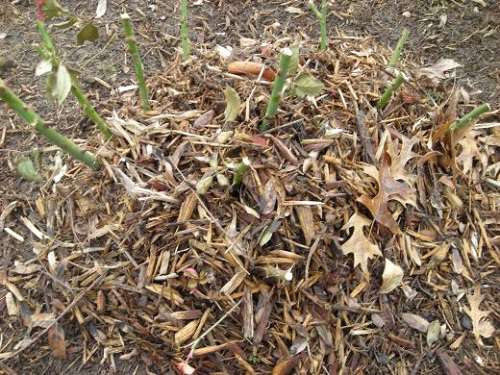

Caring for roses during this period consists in hilling with loose soil or leafy humus 10 cm high.
Additionally, you can insulate the roots of plants with a mixture of organic matter and fallen leaves with the addition of coniferous spruce branches.
The main shelter is made by the end of October and the beginning of November.
Shelter methods


The most optimal method is air dry. For this, boards made of boards in the form of a pitched roof are installed over the bushes. From above, the shields are covered with a film that creates a greenhouse effect.
If the winter is expected to be not particularly snowy, but cold, a layer of snow is poured onto the shields.
- The total height of the entire canopy will be about half a meter (so that cut rose bushes can be freely placed under it).
In a similar way, you can create a shelter in the form of a small greenhouse based on a wire frame. In this case, the roses must be additionally insulated with a covering material (over the film).
Many varieties of roses need additional insulation measures. Especially young seedlings.
♦ Tea-hybrid. For these roses, temperatures from -10 ° C are destructive. In pre-winter care for roses, the bushes are additionally covered with light frames made of slats, which are sheathed with corrugated cardboard, burlap or polypropylene.
♦ Floribunda. They are more resistant to cold than teas.Adult, healthy shrubs can do without additional cover. Young seedlings are placed in cardboard boxes without a bottom. Inside, the bush is covered with crumpled newspapers, old bark or wood chips.


♦ Climbing. Such varieties require the shelter of the shoots along the entire length. In young bushes, the lashes are removed from the supports in advance (while they remain flexible).
It is better to do this during the October hilling period. The removed lashes are laid between coniferous spruce branches and covered with non-woven material.
If the lashes have grown very much, they are not removed from the supports. Right along with the trellises, they are covered with burlap or wrapped in thick paper for 2/3 of the length.
Our roses are ready for winter holidays. While they are sleeping and gaining strength, let's take a look at the breeding methods of our beauties.
This will be discussed in the next article.
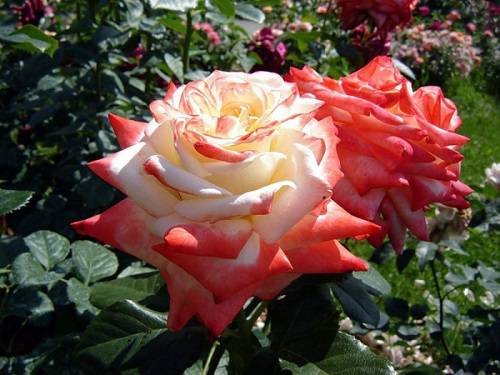

See you soon, dear readers!
Improper preparation of roses for winter
In order for the rose bushes to endure the frosty winter well, they should be properly prepared for it. Very often, gardeners make the following mistakes:
- Shrubs are fed with nitrogen-containing fertilizers in late autumn. Nitrogen promotes the formation of new shoots, the bark of which does not have time to harden before winter.
- Leave dry leaves on the bush. Dry leaves that remain on the shoots can become a home for pests and pathogenic bacteria, which begin to actively develop in the spring.
- Roses are harbored too early. Premature shelter of shrubs leads to the fact that the shoots continue to develop and grow and do not have time to fully mature by winter. All of them will not survive the winter cold. Roses need to be covered after the onset of the first frost.
- Cut the shoots too short. Pruning of shoots on the bush is carried out in the spring, when healthy and damaged shoots can be identified after winter.
Read: Planting and caring for a bush rose
The choice of material for planting
Separate the actual root and grafted seedlings. Rose saplings from cuttings of cultivated varieties grafted onto rose hips have a more powerful and well-developed root system. They are more resistant to temperature extremes and diseases, take root better, bloom well and abundantly. Their disadvantage is that grafted roses from cuttings, in order to avoid degeneration into rose hips, require the mandatory and timely removal of wild shoots. There are no such concerns for root seedlings proper.
In appearance, seedlings are distinguished with "bare" or closed ground, with a peat lump on the root system. It is better to choose a closed version or even in containers with soil and plant with it. Such seedlings take root faster. With the open version, however, you have a chance to examine the roots, assess their quality, reject damaged or scratched ones. In any case, the shoots should be leafy, not dry, without spots or cracks. Shoots are cut off before planting, leaving no more than five buds.
Step-by-step instructions for the correct watering of a potted plant
- It is necessary to collect water in containers and leave it to settle. You can also draw water from the filter and leave it to return to room temperature.
- We put a tray under the pot, which should already be there, check if the pot has a drainage system.
- The amount of water is determined from the diameter of the pot, it is important that the soil is moist, but not flooded, it should not squish from an excessive amount of water.
- After 10-15 minutes, you need to drain the water that has poured into the sump, this is the one that the plant does not need and will be unnecessary.
- In the summer, we water the plant once every one or two days, in the winter we reduce the watering to once every five to six days.
- We also apply top dressing in the summer once a week, and in the winter we reduce it to once a month - one and a half.
How to irrigate a houseplant?
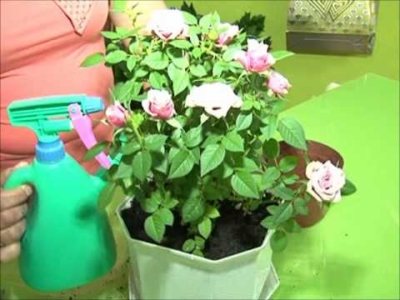

Household roses are considered quite whimsical indoor plants, and inexperienced growers are often faced with a situation where instead of a luxurious bright bush in a pot there is only a couple of half-dried twigs.
But in fact, everything is not as complicated as it seems at first glance, you just need to study a few important aspects of caring for this plant. The organization of proper watering is in the first place.
What kind of water is needed?
It is best to water the roses with separated (at least a day) or filtered water at room temperature or a little warmer, since the cold will simply freeze the flower. In addition, a disease such as powdery mildew may occur, which will then be very difficult to get rid of. Therefore, it is always worth preparing water for irrigation in advance.
How much liquid should you use?
The required amount of liquid directly depends on the volume of the pot. How much water is required is easiest to calculate empirically by observing the absorption rate. The pot must be in the pan, where excess liquid will accumulate. After 25-30 minutes after watering, the unabsorbed water must be drained, since the long presence of the roots in waterlogged soil leads to their decay.
Possible reasons for restricting access:
Access is limited by a court decision or on other grounds established by the legislation of the Russian Federation.
The network address that allows you to identify a site on the Internet is included in the Unified Register of Domain Names, Pointers to Pages of Internet Sites and Network Addresses that allow you to identify sites on the Internet that contain information that is prohibited from being distributed in the Russian Federation.
The network address that allows you to identify a site on the Internet is included in the Registry of domain names, page pointers for sites on the Internet and network addresses that allow you to identify sites on the Internet that contain information disseminated in violation of exclusive rights.
Actions after buying a potted rose
To attract buyers, sellers use techniques that harm the plant, lead to its death.
If a rose was presented or it was purchased at a flower shop, then, as soon as the plant is at home, a number of actions are performed:
- Immediately remove the packaging in which fungi grow well, since the air does not get to the plant.
- Carefully inspect and clean of dried or withered branches and leaves.
- Place under a warm shower to remove possible pests.
- Cut flowers and buds. In stores, the plant is treated with stimulants, which cause abundant flowering, which is beyond the strength of a rose. She can quickly die.
- If there are several bushes in the pot, then they are seated.
- The rose is treated with special preparations against fungi and pests.
- It is necessary to transplant into another pot in two to three weeks, so that she gets used to the new living conditions.
- In the evening, it is useful to spray with cool boiled water.
Requirements for growing conditions
Competent plant care is impossible without understanding the natural needs on which the growing rules are based.
Pot and soil
The pot must have a hole to remove excess moisture. After purchase, a new ceramic pot is immersed in warm water for two to three hours.
The pot should not be too spacious. To grow roses, you need a light pot, since dark ones attract excess ultraviolet rays. The soil needs fertile and loose.
The optimal soil has the following composition, which you can make yourself:
- greenhouse land - 2 parts;
- deciduous land - 2 parts;
- sod land - 1 part;
- sand - 1 part.
Lighting
The plant needs a lot of light, but direct sunlight will burn the leaves when sprayed.
Consider the following:
- the plant feels better on windowsillsfacing southeast or southwest.
- light should be diffused, if necessary, a special film is used to protect the rose from the sun;
- artificial lighting is used in winter, lamps should have a red-blue spectrum, it is better to use special phytolamps.
Temperature and humidity
In summer, the temperature should not be higher than 22 degrees; in winter, the rose can be taken out on a glazed balcony at a temperature of at least 8 degrees.
Air humidity not less than 50%. In winter, the air in the apartment is too dry, which harms the plant.
A set of simple measures will help keep the rose healthy:
- spray the leaves with heated water;
- rinse the leaves;
- place containers with water near it.
Pruning and shaping the bush
Pruning is the key to intense growth and abundant flowering of rose bushes. Each shoot of a rose grows and develops over several years, and then dies off, starting from the top. On the stem of the bush, buds are located, from which new shoots develop. If the rose bush is not pruned, then it will look ugly due to the presence of dead shoots. Only climbing roses do not need pruning. After removing excess shoots, the roots have more strength in order to feed the aerial part of the plant. They no longer need to supply the dead branches with the necessary substances.
Features of care for the seasons
The need for nutrients and watering is not the same at different stages of plant development. The greatest care is required during the flowering period, which takes a lot of his strength. Post-flowering care consists of pruning, reducing watering and stopping feeding.
Spring
In the spring, new shoots appear, leaves bloom, an active period begins.
A set of activities is carried out:
- Top dressing is required. Use ready-made fertilizers or solutions of poultry manure, mullein. When the buds begin to set, top dressing is applied weekly. The rose must receive all the nutrients it needs to bloom profusely.
- Provide the plant with sufficient light and waterwatered and sprayed regularly. The pot is placed on the south window.
- If necessary, a transplant is carried out into a larger pot.
- With the onset of warm enough weather, when the night temperature is at least 18 degrees, the rose is taken out to the balcony. First, they put them in the shade, gradually accustom them to sunlight. Two weeks later, she is moved to a lighted place.
Summer
The summer period is associated with certain difficulties, since at this time diseases and pests appear more often.
Care needs to be taken, mistakes will be fatal:
- Inspect regularly plant for the presence of pests, preventive measures to prevent their appearance.
- Abundant watering and spraying in hot dry weather with water at room temperature.
- Prevent the pot from overheating, dark pots to wrap in paper.
- Weekly feeding.
Autumn and winter
After the end of flowering in the fall, the rose is prepared for a dormant period. Watering and feeding is reduced, pruning is carried out. Provide sufficient air humidity, especially after turning on the central heating.
For wintering, it is advisable to transfer the plant to a room with a temperature of about 15 degreesaway from batteries. Watering is rare. In some cases, roses in winter can be with buds, for example, Bengal flowers bloom all year round. But it is preferable to give the opportunity for winter recreation.
Ways to increase the moisture capacity of the soil
An economical alternative to fertigation is the application of long-acting granular fertilizers to the soil
Two important agricultural techniques help to reduce the intensity of irrigation:
- Improving the soil.
This technique is aimed at increasing the water permeability and moisture holding capacity of the soil. The better the water penetrates into the deep layers of the soil and is retained in the root zone, the less often the roses have to be watered. On nutritious light loams, there is no such need, but too light sandy loams and sandstones need improvement.
To increase the moisture content of the soil, you can enrich it vermiculite. It is a highly processed hydromica with a high water retention capacity. In addition, vermiculite is capable of active ion exchange, due to which it turns any fertilizers applied to the soil into prolonged ones.
The situation is different on heavy clay soils. Here, clay particles have a water-retaining function. Such soils need to be loosened so that water freely penetrates to the roots and does not stagnate on the surface. To improve clay soils, use agroperlite. It is a heat-treated obsidian hydroxide rock. It drains the soil well, improves aeration of the roots.
- Mulching.
Mulching helps to avoid rapid evaporation of moisture from the surface of the soil and its sintering into a crust. Roses can be mulched using organic or inorganic mulch: peat, sawdust, pebbles, non-woven materials.
Events calendar
| Spring works | |
| March | The beginning of the removal of winter shelters (from the end of March). If it's chilly in March, move it to April. |
| April | Removal of winter shelters (complete removal by April 30). Prevention of shrubs, sanitary and rejuvenating pruning of roses in spring, removal of weeds, loosening and mulching. Installation of supports and garter. Formative pruning of freshly planted seedlings. |
| May | Pruning for flowering, loosening, weeding, fertilization, preventive treatment of soil and bushes from diseases. |
| Summer care | |
| June | First flowering time. The second preventive treatment for diseases. Removing wilted flowers, watering, loosening, weeding. Fertilization after flowering. |
| July | A month of abundant flowering. Removal of faded flowers, watering, loosening. Fertilization (in the second half of the month). |
| August | Summer preventive pruning (removal of diseased shoots and wilted flowers), watering, loosening, weeding. |
| Autumn care for roses | |
| September | Fertilization (beginning of the month). Start preparing plants for winter. Termination of any dressing and removal of up to 1/3 of all leaves, starting from the bottom of the bush (at the end of the month). |
| October | Sanitary pruning (after setting the temperature -5-7 ° C), last watering and hilling. At the end of the month, plant insulation and construction of winter shelters. |
| November | Complete cleaning of all remaining foliage and debris. When snow has fallen, it is good to compact it near the bushes (to avoid rodents getting to the roses). |
Rose care after winter begins with the cleaning of winter shelters. They need to be removed gradually, from the ends, proceeding with this when the threat of frost below -10 ° C has passed.
At night (and during the day with cold winds), the ends of the shelters must be closed again.
When to open roses fully in spring? As soon as stable warm weather is established, all covering material can be removed.
It is recommended to leave a light Agrospan cover on miniature, climbing and soil-growing varieties. Roses can breathe under this material.


